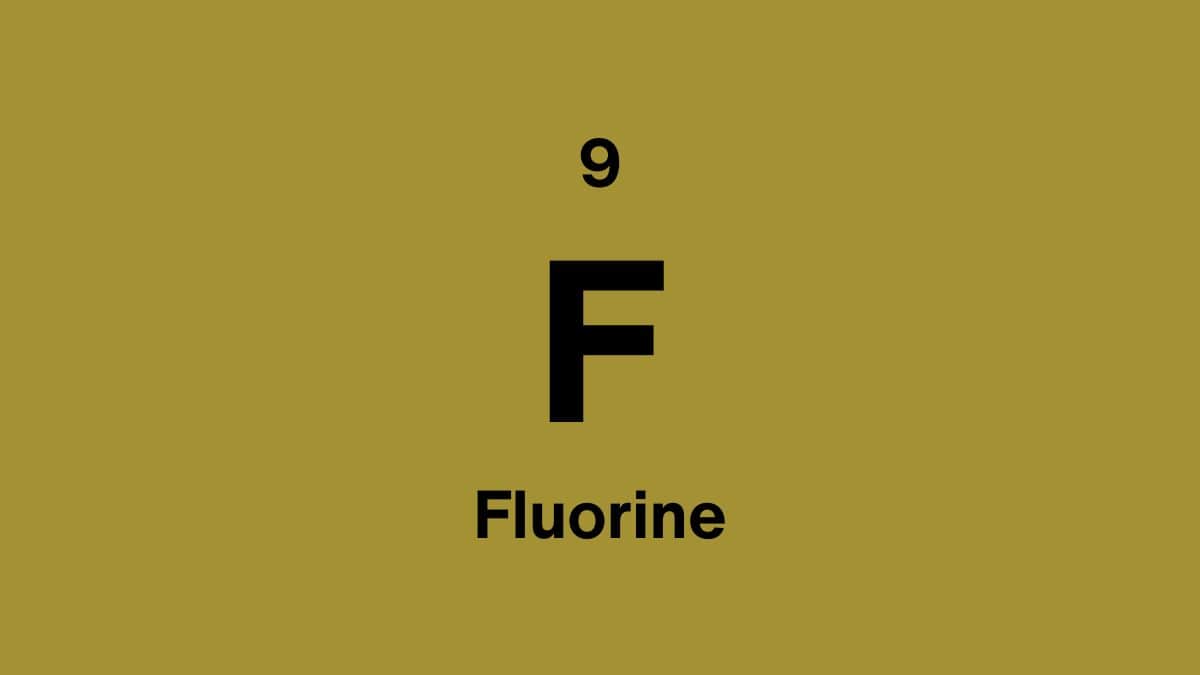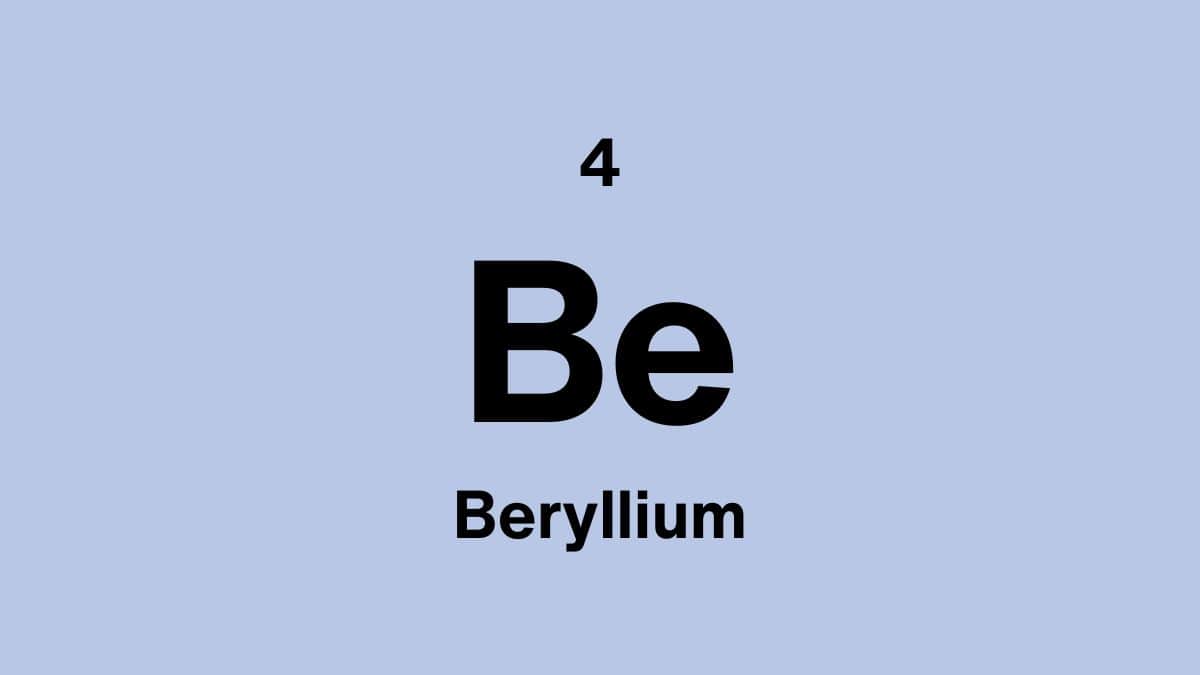Fluorine, the harmless 9th element on the periodic table of elements? More like toxic rocket fuel.
Fluorine is the 9th element on the periodic table of elements and is also the most reactive element in the universe. That means that steel wool will combust in pure fluorine gas and glass will dissolve in hydrofluoric acid. Don’t play around with this one.
Properties of the fluorine
| Atomic Number: | 9 |
| Atomic Symbol: | F |
| Atomic Weight (amu): | 18.998 |
| Electronegativity: | 3.98 |
| Melting point: | -219.67°C |-363.41°F | 53.48K |
| Boiling point: | -188.11°C | -306.60°F | 85.04K |
What does fluorine look like?
Fluorine is a pale yellow-green, highly flammable, corrosive, dangerously reactive gas, with a very strong odour, which can be smelled by humans at a concentration as low as 20 parts per billion. Fluorine is the most reactive element and attacks all metals. Fluorine changes from an extremely pale yellow diatomic gas (F2) into a bright yellow liquid at around -188 degrees Celsius.
What is pure fluorine used for?
Fluorine is also important in dental health.
Pure fluorine gas is of relatively little use. Since its reactions can emit a lot of energy, it could theoretically be used as rocket fuel. However, due to its very reactive and highly toxic nature, this would be too dangerous.
What are the main compounds with fluorine?
- Hydrogen fluoride, a compound of fluorine, is used to etch glass.
- Polytetrafluoroethylene (Teflon) is used to make non stick cooking pans.
- The element is used to make uranium hexafluoride, needed by the nuclear power industry.
- It is used to make sulfur hexafluoride, the insulating gas for high-power electricity transformers.
- CFCs (chloro-fluoro-carbons) were once used as aerosol propellants, but are no longer used due to their damaging effects on the ozone layer.
Where can fluorine be found?
Fluorine occurs naturally in the earth's crust where it can be found in fluorite, fluorspar and cryolite, but it is also rather widely distributed in other minerals. Fluorine is the 13th most abundant element in the Earth's crust: 950 ppm is contained in it.
Industrial production of fluorine
Fluorine was never industrially produced until World War II when the interest in nuclear weaponry grew significantly. Methods of producing fluorine on an industrial scale are:
Fluorine is produced commercially by electrolyzing anhydrous hydrogen fluoride-containing dissolved potassium fluoride to achieve adequate conductivity
Is fluorine expensive?
Pure fluorine gas costs somewhere between $190 and $200 per 100 grams.
Will we ever run out of fluorine?
Scientists predict that the earth will run out of fluorine in approximately one billion years. So you have nothing to worry about!
Who discovered the fluorine element?
The French chemist, Ferdinand Frederic Henri Moissan, was the first to successfully isolate fluorine in 1886. He did this through the electrolysis of potassium fluoride (KF) and hydrofluoric acid (HF).
Is fluorine dangerous
Fluorine gas is extremely irritating and toxic, but other compounds with fluorine are not toxic at all, like fluorides, which are used in water and in salts for dental health.
The primary health effects of acute fluorine inhalation are nasal and eye irritation (at low levels), and death due to pulmonary edema (at high levels). In animals, renal and hepatic damage has also been observed.
Acute inhalation of hydrogen fluoride following facial splashes with hydrofluoric acid can cause
bronchiolar ulceration, pulmonary hemorrhage and edema, and death.
Both hydrogen fluoride and fluorine can cause lethal pulmonary edema, although cardiac effects also contribute to the toxicity of hydrogen fluoride.
Fun facts about fluorine
- Steel wool bursts into flames when exposed to fluorine
- Hydrofluoric acid (HF), for example, is so corrosive it will dissolve glass.
- Fluorine has a characteristic pungent odour that can be smelled at a concentration as low as 20 parts per billion.
- Fluorine is one of the few elements that can attack diamonds.
- Fluorine changes from an extremely pale yellow diatomic gas (F2) into a bright yellow liquid at -188 degrees Celsius
Funny fluorine Jokes, Puns and One-Liners
Fluorine and chlorine walk into a bar. The bartender greets them: “Halo gens”
What do you call an ion that also raps? Fluoride, duh
We compiled a list of the Top 50 Chemistry Jokes and Puns of all time!



